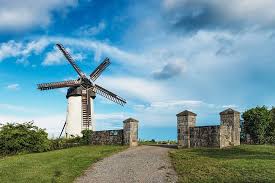Stamp: Tourism (Andorra, French Administration 1997)
Tourism (Andorra, French Administration 1997)
01 January (Andorra, French Administration ) within release Tourism goes into circulation Stamp Tourism face value 4.50 French franc
| Stamp Tourism in catalogues | |
|---|---|
| Yvert et Tellier: | Yt:AD-FR 490 |
| Michel: | Mi:AD-FR 511 |
Stamp is square format.
Also in the issue Tourism:
|
Data entry completed
43%
|
|
|---|---|
| Stamp Tourism in digits | |
| Country: | Andorra, French Administration |
| Date: | 1997-01-01 |
| Format: | Stamp |
| Face Value: | 4.50 French franc |
Stamp Tourism it reflects the thematic directions:
Tourism is travel for pleasure or business; also the theory and practice of touring, the business of attracting, accommodating, and entertaining tourists, and the business of operating tours. Tourism may be international, or within the traveller's country. The World Tourism Organization defines tourism more generally, in terms which go "beyond the common perception of tourism as being limited to holiday activity only", as people "traveling to and staying in places outside their usual environment for not more than one consecutive year for leisure, business and other purposes". Tourism can be domestic or international, and international tourism has both incoming and outgoing implications on a country's balance of payments. Today, tourism is a major source of income for many countries, and affects the economy of both the source and host countries, in some cases being of vital importance.
Mills is an unincorporated community located in Knox County, Kentucky, United States.
A post office was established in 1891 by Isaac Mills and named for his family. The post office is now closed
A building or edifice is a structure with a roof and walls standing more or less permanently in one place, such as a house or factory. Buildings come in a variety of sizes, shapes and functions, and have been adapted throughout history for a wide number of factors, from building materials available, to weather conditions, to land prices, ground conditions, specific uses and aesthetic reasons. Buildings serve several needs of society – primarily as shelter from weather, security, living space, privacy, to store belongings, and to comfortably live and work. A building as a shelter represents a physical division of the human habitat (a place of comfort and safety) and the outside (a place that at times may be harsh and harmful).



